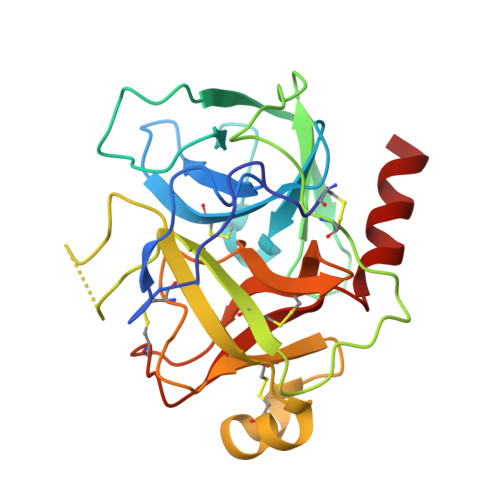Macrocyclic protease inhibitors with reduced peptide character.
Chua, K.C., Pietsch, M., Zhang, X., Hautmann, S., Chan, H.Y., Bruning, J.B., Gutschow, M., Abell, A.D.(2014) Angew Chem Int Ed Engl 53: 7828-7831
- PubMed: 24903745
- DOI: https://doi.org/10.1002/anie.201404301
- Primary Citation of Related Structures:
4Q2K - PubMed Abstract:
There is a real need for simple structures that define a β-strand conformation, a secondary structure that is central to peptide-protein interactions. For example, protease substrates and inhibitors almost universally adopt this geometry on active site binding. A planar pyrrole is used to replace two amino acids of a peptide backbone to generate a simple macrocycle that retains the required geometry for active site binding. The resulting β-strand templates have reduced peptide character and provide potent protease inhibitors with the attachment of an appropriate amino aldehyde to the C-terminus. Picomolar inhibitors of cathepsin L and S are reported and the mode of binding of one example to the model protease chymotrypsin is defined by X-ray crystallography.
Organizational Affiliation:
School of Chemistry & Physics, The University of Adelaide, North Terrace, Adelaide, SA 5005 (Australia).















